Part 3 - Investigation of the Rio Cauto
We arrived at a disadvantage, tactically speaking: we didn’t have any casa prearranged, we were tired and disoriented, and it was dark. We entrusted our fate to the first carriage in line, who overcharged us to bring us a few measly blocks to a casa particular. We made a deal with the owner ($15 for the both of us), and lugged all our baggage up the circular staircase and into the appointed room.
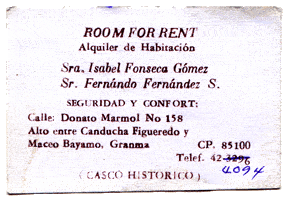
Thus began our stay in what I would call a “proper” casa particular. The one in Havana had been much more of a hostel than simply a family’s home whose doors had been licensed to open to foreigners. We flopped ourselves into the bedroom, and Jay soon noticed that the man’s shoes were under the bed. Clearly, this was the couple’s bedroom, and they had quickly vacated it, as the best room in the house, for us. So quickly that he’d forgotten his shoes. This was confirmed when, first thing in the morning, Isabel, the wife, timidly knock at our door to retrieve them.
Our stay with Fernando and Isabel was our introduction to the Cuban hospitality we came to know and love. Bayamo gets blissfully little tourist traffic. There is nothing particularly famous about it, there are no nearby beaches, and it is fairly removed from any resort regions. These factors made it such that, as foreigners in town, we were either ignored or welcomed with genuine warmth.
I have the fondest memories of this little town. I learned so much there about Cuba. For example, the “peso restaurants” where the Cubans eat. There is often no menu because there are no choices. The waitress at the first such restaurant I went to had told me what food they had, and I hadn’t understood a single word she’d said. However, I had understood the costs of each item, and clearly I could order everything and it was under a dollar. It was rice, beans, fried pork, fried green bananas, a salty lettuce salad, and the spread of plates covered the table.
Deep-fried chicken is another inordinately popular favourite, and goes far towards explaining a certain variety of physique sported by many Cubans. But who’s to criticize diet, when people live to be so very old, and the chickens are very likely to be free-range and “organic”?
Breakfast we always took at our casa, for the whole trip, and was always more or less the same. I wouldn’t doubt if there was some government document sent out to those awarded a licence. For two or three dollars:
- Eggs, fried or in an omelette.
- Toast made from powdery, white, baguette-style bread, served with flavourless butter.
- Juice, orange or guava, usually sweetened with white sugar.
- Fruit, which always included banana, but sometimes guava or papaya.
- Coffee: the coffee was always really good, made using one of the Italian-style “mokka” or “cafetiera” devices that makes espresso on a stove-top. It’s my absolute most favourite kind of coffee, the kind I make for myself ever since living in France, and as a result I was always, always happy in the morning.
Dinner. Well, we hadn’t yet begun eating at the casas. Price-wise, we hadn’t realized we’d been spoiled by one particular Italian restaurant in Havana, called Caracalla, where we were served fairly yummy meals for under three bucks by a waiter who looked everything like Roberto Benigni. Right before we left, Jay also discovered they can do a large pizza covered in vegetables ranging from green beans to artichoke hearts for $2.50.
It had seemed that everything else in Havana seemed to be much more expensive, meals starting at eight dollars. When you come from Toronto, hey, you expect a lot for eight bucks American. At one point, we were seeking grilled chicken in Old Havana, which we didn’t think was too much to ask. I remember one book vendor we’d asked for advice had offered to have us over to her place for grilled chicken the next night. I wish we’d taken her up on it! We ended up at one restaurant we were told had a grill, and indeed we smelled some fine BBQ as we approached, but sitting down we found our ears assaulted by yet another mariachi band playing favourites from the Buena Vista Social Club. Okay, they’re great songs, but c’mon, enough already!
One guy sitting around the neighbouring table leaned over and shouted, over the din, that he had “una oferta” for me. I didn’t know what he was talking about, but I hollered back that I didn’t care what he had, I was hungry and nothing else mattered. Annoyed at the prices at this restaurant, we got up and left.
As we walked off in whatever random direction, we found ourselves accompanied by the guy with the offer. He told us he knew where we could get some great food, very close to where we were. We wordlessly decided it could do no harm to follow him and set off. Just a minute down O’Reilly Street we drew up to some random entrance at a non-descript (by Old Havana standards) building. There were only stairs leading up into darkness. At this point we stopped and started trying to ascertain just where he was taking us. He said it was un restaurante particular. We knew we were staying in a casa “particular” but we still had no real sense what that word meant. (I still don’t really know, but the feeling it now gives me is “private” or “individually owned”. It isn’t necessarily illegal or underground.)
So we started talking price. He said it was a good price, only nine dollars each. Nine dollars! We rolled our eyes. Did he think we were fools? Well, in any case, we eventually decided on nine dollars, but as total for the both of us, even though we still didn’t know what we were eating. We followed him up the stairs.
Just then, another man was on his way down the stairs, and there was a nod between him and our escort. What did that mean? I have to admit that perhaps we weren’t afraid enough at that point, because we kept up the stairs. Shouldn’t instinct and/or street smarts have told us to hightail?
As it turns out, no, our street smarts were fully operational. The experience was highly rewarding. We came around a corner at the top of the stairs and entered a huge space. The ceiling, several stories up, was full of holes through which sunlight beamed. There were balconies overlooking the immense central area, and people loitered and looked down or across, chatting with each other. The whole place was extremely run down but beautiful. We were told that the building used to be a fancy hotel, but, like much of the property in Cuba, after the revolution it had been divided up and given to the people. So, the result is that what were once part of the exclusive domain of a few rich visitors from the States were now the high-ceilinged apartments of many Cubans. Wonderful!
We entered one of doors and walked straight into a narrow kitchen where a chubby and smiling woman was contending with a bunch of pots and pans full of fragrant feed. Squeezing through there, we came into a small, square room where there was just barely enough room for a couple of small couches, a table for two, and a small table for four. There were already seven or eight people in this little room, and still room for us at the table for four. They were all chatting amongst themselves and waiting for their lunch.
The food that arrived was our first great Cuban meal. Chicken legs in sauce, the juicy, tender meat falling off the bones, along with some rice and beans and a modest salad. There was a delicious home-made hot sauce available, too. It all tasted like it’d been made by your mother, or someone’s mother who was a really good cook, anyway. There was no question of running out of rice or beans, nor of leaving hungry.
We started talking with the young couple across from us. Even if we’d wanted to ignore them, it would have been quite impossible: our elbows were almost in each other’s plates. And would you believe… They were friendly, interested, and tried their best to answer our questions about rivers that were on the other side of their country. Jay and I both agreed we should never go to another restaurant: this was the way to dine in Cuba.
In the end, in spite of talking to anyone who would listen, we never found out much in Havana about anything in the east. We had decided to go to Bayamo to get some local information about the Cauto, but also to do some banking and get provisions for the paddle. The next day after having arrived by train in Bayamo was to be devoted to these tasks. And to eating, of course.
One of the first things we did with that day was to walk to the Bayamo River which ran through a part of the town. According to our map, it eventually joined up with the Cauto. But, depending on which map you looked at, either (a) the Bayamo went through a huge reservoir then joined the Cauto, (b) the Cauto went through a huge reservoir before being joined by the Bayamo, or (c) there was no huge reservoir. Our map definitely had decided not to draw in this huge body of water that should have been half-way between Cauto Criso and the town of Rio Cauto. You can compare the scan of the eastern part of Cuba, where the reservoir is shown, with the “detail” of section 18, where it is decidedly absent.
On the topic of this reservoir, I remember that later we went back to the train station to try and get our $12.50 back. We’d been too exhausted to deal with this when we’d arrived. Of course, there was no one there who could deal with that, but there was one woman who worked at some kind of information desk that Jay decided to ask about the reservoir. She knew it. She was convinced that it was off limits to most people, except local fishermen, and so on. That was disconcerting, but hey, it wasn’t on our map, we’d have a great excuse for being there if we were caught.
When we arrived at the river Bayamo, we saw that it was dammed right where we came to it, but that in any case it was a piddly river. The dam had the effect of creating a little pond area where locals would swim or circle about in rented paddleboats. On the other side, the “river” looked just about dried up. It was very shallow, perhaps just enough for a kayak, or perhaps not. A bit further downstream it was just full of weeds, but you could portage easily… Beyond it looked like it deepened and became very lush and then curved out of sight, teasingly.
We stood on a bridge overlooking the shallows and weeds and the tantalizing bit downstream and talked about how we’d walk (or take a taxi) down to the bridge, then walk along the left bank to what looked like a flat area just next to where it deepened. There we could assemble the yaks and pack them peacefully.
We’d have enough food for a day or two, and figured for about a week of paddling. Along the riverbanks we would find fishermen who would put us up and feed us, or maybe villages where someone would be willing to let us eat and shelter beneath their roof. And Jay would bring out his guitar, and me my harmonicas, and we’d jam with some Cubans on a porch overlooking the river. Yeah, all after a nice big fish meal.
On our way back from observing the Bayamo River from that bridge, we stopped at a juicebar for some water. One friendly gentlemen named Tony asked where we were from. Naturally, we started drilling him for information about the rivers. It turned out he knew parts of the Bayamo well, and had fished the Cauto when he was younger. Great! We decided to trust him with our story, still unsure if there was any reason to keep it a secret, anyway. Before long we found out that the Bayamo was extremely low this year.
In fact, the river being low became yet another theme in our trip, and yet another reason why we chose a bad month, bad year, and so on, to execute our plan. There simply hadn’t been much rainfall in Cuba in a long time, and so all the rivers in the country were far lower than usual, and some had dried up completely. According to Tony, even on good years the Bayamo had innumerable regions of “matas”. We didn’t know what that word meant yet. Maybe it meant rapids! We didn’t know the word for that. We had to make do with asking if there were lots of rocks. But that wasn’t it. He grabbed a woven basket and asked us if we knew the hats that were similarly made. Ah, reeds! Lots of reeds, making for many impassable stretches of river. Portage every time? A nuisance, but not impossible. We tried to ascertain just how many of these stretches there would be, but he was sure of nothing except that no boat could paddle the length of the Bayamo.
But we had folding kayaks. We could go anywhere. And in any case we didn’t need to take the Bayamo. Our goal was the Cauto. These sorts of revelations were exactly why we were making inquiries. We could go with our original plan, which was to go to Julio A. Mella to the lake that looked like the Cauto’s source. Judging by the map, we thought we could also possibly go to the town of Contramaestre and take the Contramaestre River to where it joined the Cauto. Both of these options sounded great: “going to the source” is a traditional explorer’s goal, isn’t it? And, well, Contramaestre is just a cool sounding name from which I inferred proximity to the mountains. What could be better than starting in the mountains and following the longest river in Cuba to the Caribbean?
So we pressed him about the Cauto. Were there any reeds? No, no reeds, but, he pointed out, there were regions where there were rapids. Ugh! How disheartening! I’ve never had to deal with whitewater in any boat, let alone a sea kayak made principally of thin fabric. Jay was unphased: he said you just have to keep your eyes open and pull over to the riverbank when you see a rocky region approaching. Then, he said, you “read” the rapids and decide whether to paddle carefully through or portage. I was skeptical.
Then there was another thing we wanted to ask. We’d read that there were crocodiles in parts of Cuba, so we’d asked around in Havana. It sounded like whereas they used to be all over Cuba, they were now only found in the Zapata swamplands, close to the Bay of Pigs. In other words, a world away.
One person we’d talked to at one point or another had said that a few years ago the crocodile situation in Cuba had been altered by a cyclone that had come through and spread the reptilian hazards all over the country again. Somehow, in the magic of that moment, I had believed this person. But the longer I’d thought about it, the less likely it seemed. Crocodiles flying around in a tornado like Dorothy? Anyway, we asked Tony about crocodiles, pretending to be joking.
Ah yes, the other problem would be the crocodiles. C’mon, really? He’s just joking, right? But Tony had seen one himself, just recently, up by the rapids near the Jose Marti museum upriver on the Cauto. Another impartial man was called over, and I watched Tony carefully to see if he would wink or innuend the witness. This other man agreed emphatically that the Cauto was known to have crocodiles all the way upriver: they swim up from the mangroveland in the delta where the Cauto hits the Caribbean Sea. They laughed with us a little, good-naturedly, about kayaking in such a river.
As for the confusion about the crocodiles and where they were to be found in the country, the problem may be that there are at least two kinds of crocodiles in Cuba. One of them, the Cuban Crocodile, Crocodylus rhombifer, is an almost extinct species, and on all of the earth they are only found in one small region of Cuba - Zapata, far away from us. I guess when you’re talking crocs, Cuba’s famous for this. But it’s not famous for the American Crocodile, Crocodylus acutus, because they’re very common and the kind found all over Central America and in Cuba and so on. They’re just taken for granted, really.
What about the Bayamo? Jay asked. They answered that no, probably no, actually we’re not sure if there are any crocodiles downstream on the Bayamo.
Tony had been making drawings on a piece of paper all along, with rough maps and a drawing of reeds. He doodled some crocs and rocks onto different sections of the Cauto.
So much for getting out of the water to “read the rapids.” So much for the Cauto!
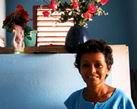
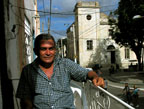
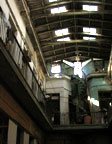
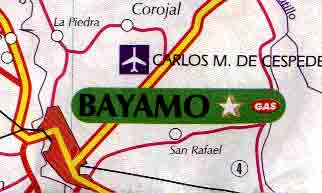
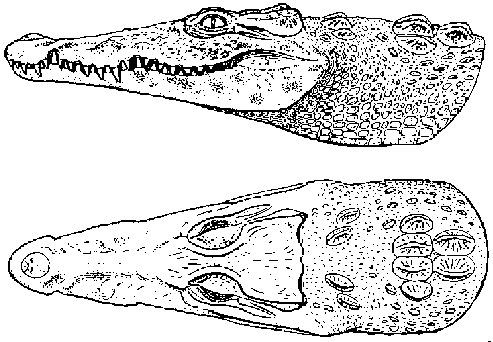
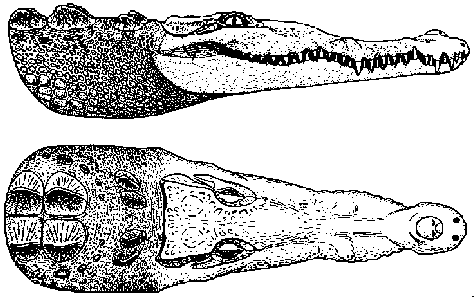


0 Comments:
Post a Comment
<< Home